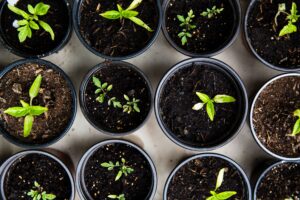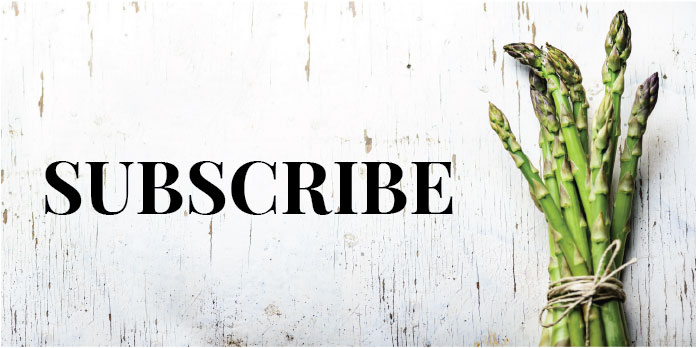There is something special about planting a seed, tending to it and watching it grow into a strong healthy plant. It is such a simple joy and one we humans have done for an eternity, but, for many in today’s modern world the thought of growing their own vegetables, herbs or flowers from seed can be daunting. With a little knowledge, practise and patience growing from seed can be a rewarding experience in so many ways
Why seed?
Apart from being good for the soul and for your health, growing from seed is financially smart, one inexpensive packet of radish seeds can turn into 15 bunches or one packet of broccoli seeds can produce 100+ plants and so on. With so many seed varieties available you could be eating candy striped beetroot, white eggplant, super tasty tomatoes in all shapes and sizes or simply tastier and more nutritious food every day.
Some fundamentals of seed sowing
- Always use clean pots to plant seeds in – disease can spread from old pots and containers.
- Be patient – while many seeds germinate in as little as 4 or 5 days some can take as long as 14-18 days for germination to occur.
- Use quality potting mixes and composts – Pathogens can live in soil, avoid using old mixes or soil that is moldy or unhealthy.
- Despite quality seed and your best attempt seeds can be fickle, not every seed will germinate and for this reason we always say over plant – If you do have good germination you can always give seedlings away as gifts to neighbors, friends or family.
- Keep a record – Knowledge is key. Note down the mix that was used, the day seeds were planted and how many seeds you planted. The back of our seed packets include a handy section for you to record this information.
Sowing direct vs sowing in punnets
While there are varied thoughts on sowing direct vs sowing in punnets, your climate and crop type are often the driver of how and when seeds should be planted.
A good rule of thumb that we like to follow is any crop that produces its primary food supply underground should be sown direct into the ground. Any disturbance to the root, particularly when young can affect the growth. This thought covers vegetables such as beetroot, radish, carrots and turnips.
Seeds like tomatoes, chillis, capsicums and eggplants often need a long growing season to reach maturity and for that reason many gardeners who live in cooler climates choose to grow their seeds in punnets undercover well before they would be able to plant them in a garden to give them a head start.
Growing in punnets also helps reduce the loss of seed and tender seedling to snails, slaters, garden bugs and birds.
Growing medium
Ask a gardener, complete a google search or consult any garden book and you will come across a plethora of different soil mixes and growing medium ideas.
While there are no hard and fast rules on what you can and cannot grow seeds in, there are basic thoughts that are consistent:
- Keep it fine – no large chunks of bark or other uncomposted material. It takes a lot of effort for a little seed to push through the ground.
- Good aeration and porosity – this is achieved by including things like vermiculite, horticultural sand and coir peat into your mix. It provides good drainage yet help keeps soil moist and allows oxygen to remain in the soil.
- Keep the soil neutral – too much fertiliser will burn young roots.
Pre-packaged seed raising mix is commercially available however you can easily make your own – a much cheaper and in many cases better soil mix. After years of trying different mixes and reading countless articles we have settled on a mix that we think is ideal for germinating most seed types.
In a large tub mix the following together:
- 2 parts rehydrated coir peat
- 2 parts sieved compost or sieved potting mix if this is all you have
- 2 parts vermiculite (or sand if you do not have access to vermiculite)
- Small dusting of blood and bone
If using potting mix or pre-packaged mixes, make sure the bag is fresh and no mold is present. Pathogens can build up in older bags and can reduce germination rates and cause seedlings to fail in their infancy.
How to sow
Too deep, too close, not deep enough – it can be confusing. In general terms, the bigger the seed the greater the depth and more space required.
Larger seeds like beans, peas and pumpkins can all afford to be planted at approximately 1-2cm deep, or double the thickness of the seed. As a rule most other seeds can be sown at only a few mm deep. In punnets – rather than push smaller seeds into your growing mix place on top and lightly sprinkle a thin layer of extra mixture over top and water in gently. When directly sowing into the ground create a shallow depression and lightly back fill to the appropriate depth. Planting too deep can reduce germination rate and increase the chance of the seed rotting before it germinates.
Whether you are planting directly into the ground or in punnets, we always recommend that you over-sow a few seeds. This allows you to thin out any weaker seedlings and use healthy thinnings as garnishes or in salads.
When over-sowing in punnets, be sure to thin to a number whereby you will be able to remove the seedling in a few weeks time without damaging the roots of the neighboring seedlings. A standard seed punnet is ideal for 6-8 mature tomato, broccoli, lettuce, capsicum or chilli seeds.
Warmth and moisture
Warmth and moisture are by far the most important factors in successful seed germination. Contrary to popular belief, most seeds do not require huge amounts of bright light for initial germination (a notable exception is lettuce), it is only once seed has germinated that light and nutrient truly comes into play.

For more traditional summer vegetables such as pumpkins, zucchini, tomatoes, eggplant beans, chillies, capsicums and corn, the ideal soil temperatures should be somewhere from 16 to 22 degrees Celsius for successful seed germination. If like us you are in a cool climate, the only way to achieve these consistent soil temperatures in cooler months is to start your seeds indoors in a warm spot or on a heat/propagation mat.
Just this month we completed a test whereby 4 punnets of tomato seeds were planted in our glass house and 4 punnets on our kitchen table. Three weeks in and the results could not be more opposite. While the glasshouse is lovely and warm during the day and protected from frost at night, the difference between night and day temperature is far too great and only a small percentage of the seeds had germinated. In contrast, the seeds that have been sitting on our dining room table have had consistent warmth with very little variation in temperature and have resulted in 25 healthy seedlings.[/vc_column_text][/vc_column][/vc_row][vc_row][vc_column][vc_column_text]Vegetables that are traditionally known as cool weather vegetables such as broccoli, cauliflower, cabbage, radish, onion, lettuce, leeks, mustard greens and peas will need a certain amount of warmth to germinate but will more often that not readily germinate in cooler soil temperatures or without the aid of a heat mat.
It is important to ensure that your seeds receive adequate moisture, the soil should be damp but not saturated. Seeds that are allowed to dry out after their initial watering will most likely not germinate while seeds that are over watered can easily rot. A good way to ensure you do not over water is by the use of a spray bottle.
After germination
Once your seeds have germinated, it is the right time to ensure that they receive enough light and nutrient to grow strong and healthy.
In most cases, the seed raising mix should have enough nutrients to get a young seedling through its first weeks of growth. However to encourage growth, water with a weak seaweed solution, diluted worm juice or quarter strength fish emulsion once or twice a week.
Do not be tempted to apply excessive amounts of fertiliser, if your fertliser is too strong the young roots will burn and the seedling will die. ‘Less is more’ at this stage.
Seedlings will grow best in full light, too little light will result in tall leggy plants and yellowing of leaves. Ensure any seeds grown indoors are moved into a glasshouse or sheltered/protected outdoor position.
The final say
Growing from seed need not be stressful, have a go, experiment with different growing techniques, start seeds in different locations and be ok with the fact you might loose a few seedlings along the way – Our packets all have plenty of seed so you can always try again!
Happy growing and remember to pop us an email if you have any questions.




